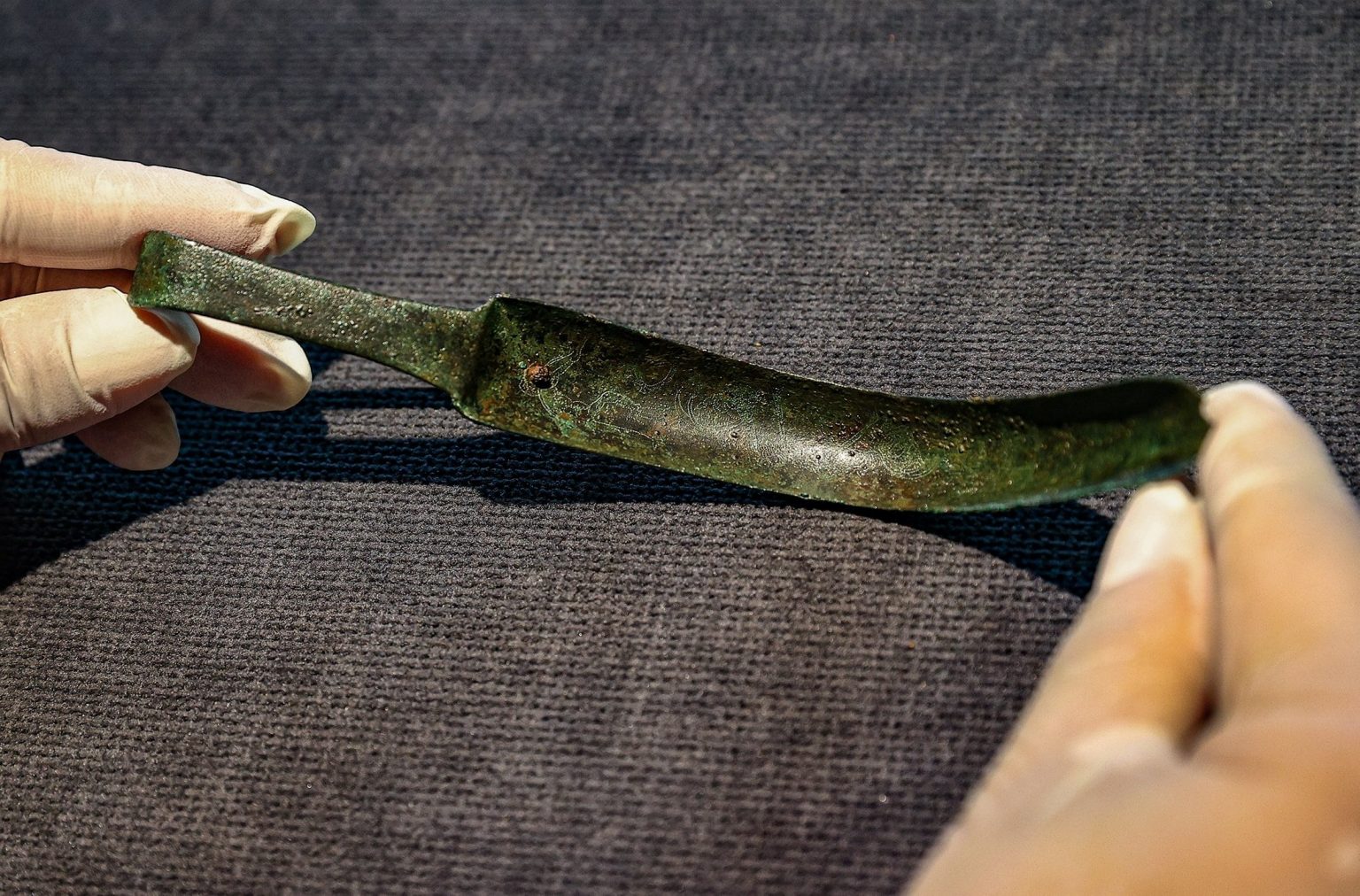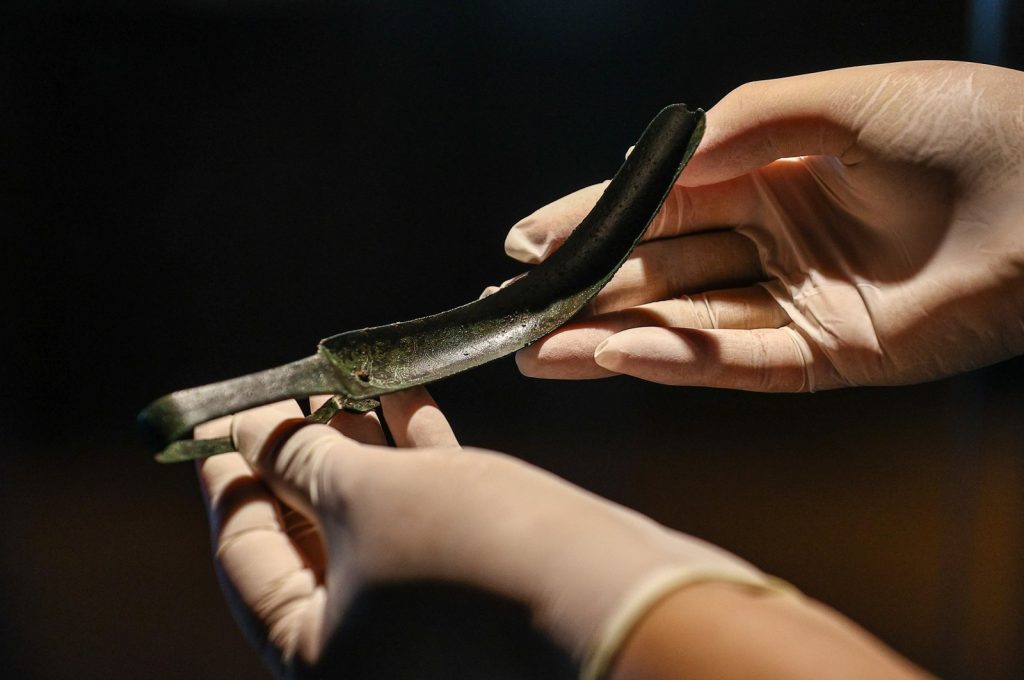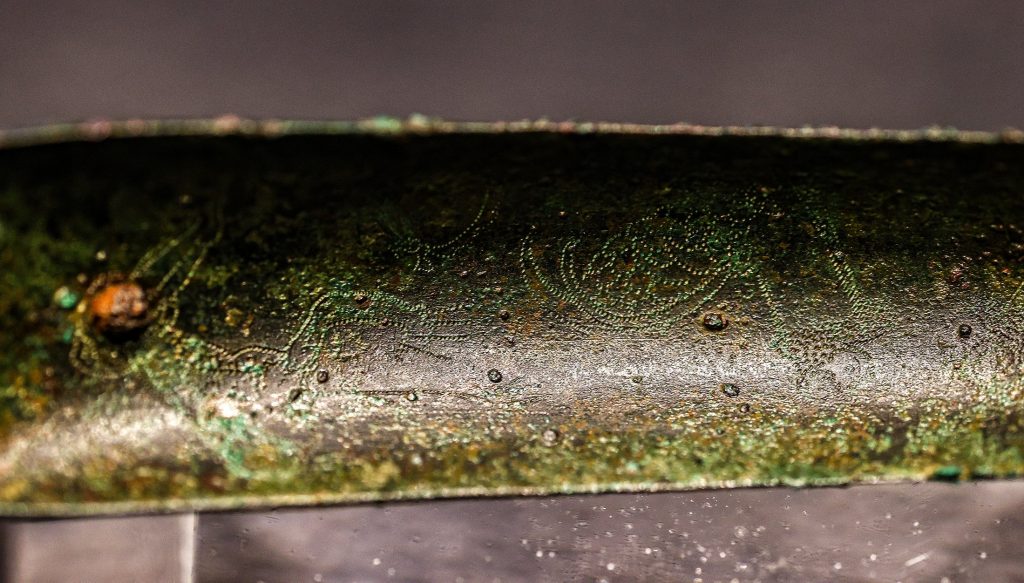
Posted on 06/01/2023 11:56:29 AM PDT by Red Badger

Turkey’s Izmir Archaeological Museum is hosting a different exhibition this month.
A bronze strigil is the museum’s guest this month as part of its “You Will See What You Can’t See“ project, in which a new, special artifact is introduced to visitors every month.
The Izmir Archaeology Museum recently opened a new, unique exhibition focusing on the historical relic known as a “strigil,” which was used to cleanse the body 2,300 years ago by scraping off dirt, perspiration, and oil.
The strigil in issue was unearthed during archaeological digs at Teos, one of the 12 ancient Greek towns that made up the historical Ionian League.

The tool was used in ancient Roman and Greek cultures, and the one on display is believed to have belonged to an athlete or a gladiator.
The Izmir Archaeology Museum
The tool was used in ancient Roman and Greek cultures, and the one on display is believed to have belonged to an athlete or a gladiator. Photo: AA Hünkar Keser, director of the museum, said that the word “strigil” could be translated as “cleaning spoon,” as he explained the historical use of the artifact.
“We know that athletes covered their bodies with olive oil before they practiced sports. After completing their workouts in sandy areas, they had to clean their bodies,” Keser told Anadolu Agency (AA). “They used to scrape their bodies with this spoon-like strigil, and thus (remove) the coarse dirt.”
At approximately 16 centimeters (nearly 6.3 inches) long, and shaped in a form that evokes the image of a crescent moon, the strigil has unique engravings on its surface that depict scenes from a cockfight.

The strigil was discovered during archaeological excavations in the ancient Greek city of Teos, one of the 12 cities that formed the historical Ionian League. Photo: AA
“We know that it is a custom-made spoon. The cockfighting figure on it is also an interesting detail. In those times, fighting is a form of entertainment used to attract people’s attention. The use of the strigil is also specific to that period.”
Keser noted that the strigil was unique, just like the other ancient artifacts of the museum. He added that the rare and special strigil had attracted a lot of attention from visitors.
Keser said that some visitors would examine the artifacts that were exhibited as part of the “You Will See What You Can’t See” project for hours.
The “You Will See What You Can’t See” exhibition is due to run through January 2022.

OSTER SWEAT SCRAPER
Nasty, sweaty PinGGG!...................
From what I have read elsewhere women of that time loved to get bottles of that scraped off sweat. It turned them on for some reason.
"Maximus, is that a strigil in your toga, or are you just happy to see me?"
Thanks Red Badger.

Wanna tickle my strigil?......................
Well, seeing the shape of a strigil, that makes sense. Being curved and having a vessel-like cavity makes no sense otherwise. A straight, flat blade would have done just as well. But saving the sweaty perspirations of a major gladiatorial battle would be quite the souvenir for wealthy Roman women.
The gladiators, or their owners’ probably sold it at a premium price..........................
“Better to have your brother scrape your back.” — Tiberius [George Baker — I, Claudius (1976)]
Disclaimer: Opinions posted on Free Republic are those of the individual posters and do not necessarily represent the opinion of Free Republic or its management. All materials posted herein are protected by copyright law and the exemption for fair use of copyrighted works.